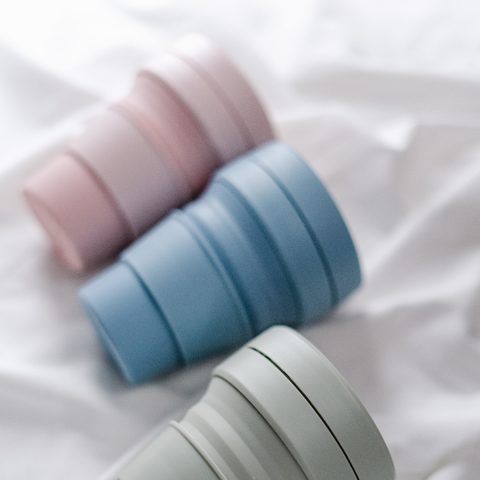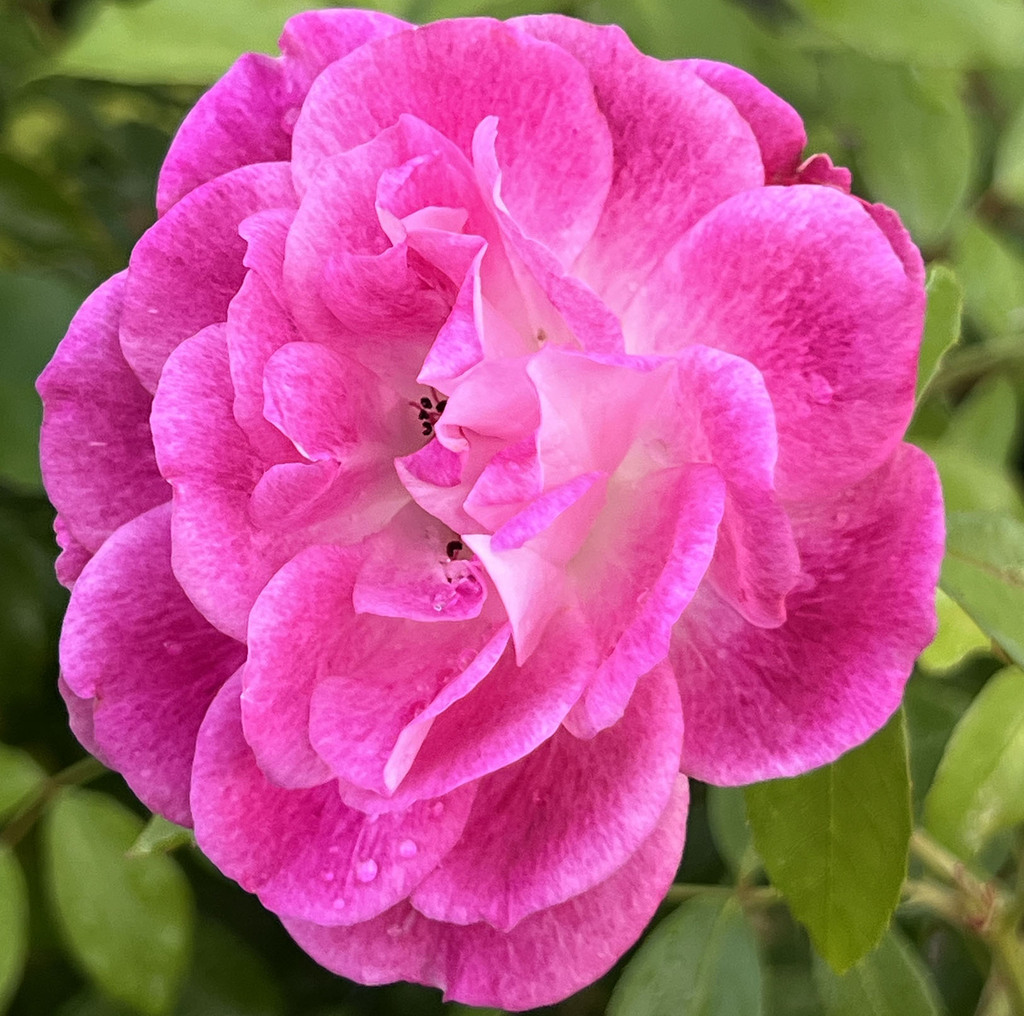| Name | Tagline | Description | Lineage & Lore |
|---|---|---|---|
| Stainless Steel | An industrial-grade beauty | This hybrid tea gives you an edge with its silvery-lavender petals and strong upright stems. Lightly citrus-scented and elegantly spiraled, Stainless Steel is both ultra-modern and deeply refined. Ideal for cutting-edge cutting gardens and for brightening up contemporary bouquets. | Bred by Tom Carruth and introduced by Weeks Roses in 2001, Stainless Steel descends from the lushly scented Blue Nile and the iconic Sterling Silver (one of the very first lavender hybrid teas) resulting in a cooler tone, more fragrant nose and improved vigor over both her parents. This stunning beauty just might steel your heart—because nothing says romance like corrosion resistance. |
| Candy Land | I’ll take you to the candy shop | Candy Land isn’t just a rose—it’s dessert on a vine. Creamy petals streaked with wild raspberry-pink swirl like taffy around high-centered blooms that burst open in kaleidoscopic clusters. It doesn’t just climb—it smothers fences, trellises, and arbors in a nonstop candy-coated cascade. The fragrance is playful and fruity, reminiscent of rainbow sherbet with a swirl of traditional damask. It’s not just a rose—it’s a sugar-fueled geyser of color and fragrance. | Bred by Jack Christensen and released by Weeks Roses in 2006, ‘Candy Land’ is the rose-child of Fourth of July and Pearl Sanford—a lineage known for riotous stripes and rock-solid vigor. With its peppermint-sundae petals and unrelenting bloom cycle, ‘Candy Land’ is bringing full technicolor joy to your vertical spaces. |
| Black Ice | Slippery when wet | Black Ice is drama—deep red petals that darken to near-black, set against an erect foil of glossy, disease-resistant foliage. Strong canes and a steady bloom habit make ‘Black Ice’ a reliable standout in borders or as a striking focal point. Enjoy an icy refreshment as your ‘Black Ice’ rosebush flowers steadily through the season. | Bred by Swim & Weeks in 1971, ‘Black Ice’ is a hybrid tea from the loins of ‘Chrysler Imperial’ and ‘Tara’. Selected for its saturated coloring, striking foliage, and durability in heat, it’s a rose that balances elegance with resilience. More mystique, more drama, more passion, more allure—this one’s going to make an impression. |
| Applejack | Part rose, part cereal mascot | Is it a rose? Is it a breakfast icon? Who’s to say. Applejack explodes out of dormancy like it’s late for school—bursting with huge, wild single blooms in hot pink with golden centers looking like portals to pollinator nirvana. Color? Loud as the nose on this one. Fragrance? Crisp apple skin meets heirloom rose for breakfast tea. Growth is upright before arching outward in romantic chaos, with apple-scented foliage, good shade tolerance, and a maxed-out size of 8 feet tall and wide. One of the first to bloom and one of the last to quit. | Created in 1973 by Dr. Griffith Buck, Applejack is the lovechild of a hybrid rugosa and Austrian Copper. It inherited rugged good looks, prairie-hardened roots, and an absolute disregard for formal garden etiquette. Great for big spaces, rough weather, pollinator parties, and gardeners who prefer their roses unbothered and slightly unhinged. |
| Sea Anemone | Clownfish not included | Sea Anemone is a compact floribunda with recurved, frilled petals that resemble the soft, radial symmetry of its namesake. Blooms open in coral-pink flushes atop glossy, disease-resistant foliage, with a tidy upright habit and steady rebloom. Finally, a rose that allows you to use the word “tentacle” in daily conversation. | Though its exact parentage is obscure, Sea Anemone reflects modern breeding focused on textural novelty, dynamic coloration, and reliable garden performance. A favorite among collectors and pollinators alike. |
| Strawberry Macaroon | I’ll take a dozen, please | Strawberry Macaroon serves up tight, rounded blush-pink blooms with the occasional swirl of cream or deeper rose, depending on the weather. The flowers open in clean, symmetrical rosettes —small, sweet, and suspiciously perfect. The scent is light, with fruity top notes and a hint of green tea, flowering in steady flushes on a compact, upright plant with clean foliage and reliable structure. Because all of us deserve a little treat. | Bred by Hiroshi Ogawa in Japan and introduced in 2011, Strawberry Macaroon draws from floribunda lines selected for symmetry, soft color blends, and container-friendly growth. Its name isn’t without reason—the structurally scrumptious bloom really does look like a big pink pastry opening up. Who wants a treat? |
| Cupcake | Bae lookin’ like a snack | Like pink frosting in the garden, Cupcake blooms in soft, rounded clusters with just a hint of blush. This one’s no softie—it shrugs off disease, reblooms on repeat, and handles heat like it was raised in a toaster oven. The petals are technically edible, but honestly? Too pretty to eat. | Bred by William Warriner in 1981 for Jackson & Perkins, Cupcake is a low-key garden hero—reliable, polished, and full of charm without the fuss. It’s one sweet rose that won’t give you a sweet tooth. |
| Abracadabra | What happens in the garden, stays in the garden | A striped sensation with a flair for the dramatic, Abracadabra conjures blooms streaked in burgundy, cream, gold, and red. Each flush is a striking display of medium to large flowers, with patterns that shift depending on temperature and light. The nose is light, but it’s the visual impact that steals the show. You really have to give a hand to this magnificent mutant. | A spontaneous sport of the velvety hybrid tea Black Beauty, Abracadabra appeared in Germany in the 1990s and was introduced by Kordes. Its bold striping is the result of a somatic mutation—nature’s version of sleight of hand. Whether in the ground or filling a container, here’s no lack of showmanship from this top performer. |
| Blue Gravity | Roses are blue, violets are blue… | While true blue pigment doesn’t occur naturally in roses, some cultivars come remarkably close. Blue Gravity has perhaps the strongest impact of them all—its high-centered, light lavender-grey, bluish blooms are so unique, it’s like they’re from another dimension. A silver sheen amplifies their otherworldly effect. An impressive cultivar that stretches the limits of rose pigmentation. | Bred by Tantau Rosen in Germany in the early 2000s, Blue Gravity was developed for its distinctive coloration and strong garden performance. True blue is nonexistent in the genus Rosa, making this blueish-toned anomaly a prized specimen among color chasers seeking something from the violet side of the visible spectrum. |
| Golden Showers | Not that kind of golden shower | Despite its infamous connotations, this one’s aptly named: Golden Showers drenches arbors, fences, and trellises in a cascade of vivid yellow blooms. Large, semi-double flowers open in a fluorescent golden hue, fading to a lighter, more mellow yellow as they age. Lightly fragrant, reliably repeat-blooming, and hardworking—even when dehydrated. | Bred by Dr. Walter Lammerts in 1956, Golden Showers descends from ‘Charlotte Armstrong’ × ‘Captain Thomas’, making it one of the earliest yellow climbers in history with reliable rebloom. A classic with a controversial name but garden behavior too good to cancel. |
| First Prize | Best in show | Few roses make a statement like First Prize. This hybrid tea produces enormous, classic blooms in saturated rose-pink with subtle coral undertones. Flowers can span over 6 inches across, held singly on long, sturdy stems perfect for cutting. A moderate, sweet rose fragrance adds to the appeal, and the bush itself grows tall and upright, with healthy foliage and consistent rebloom. A blue-ribbon beauty through and through. | Bred by Herbert Swim and introduced by Weeks Roses in 1970, First Prize descends from ‘Prominent’ × ‘Pink Peace’. Its massive, richly colored blooms—often topping 6 inches—earned it an AARS award the year of its debut. With long stems, excellent form, and reliable performance, it remains a standout in both gardens and exhibition circles. |


